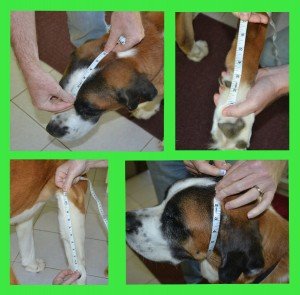
Obesity in dogs and cats is one of the most common medical issues that we face on a daily basis at Welland Animal Hospital. The most common causes are dietary (overfeeding vs high fat/caloric diets), lack of exercise, genetic factors, and medical issues like hypothyroidism for example. A thorough physical exam by your veterinarian and blood work can often eliminate medical causes of obesity.
Dogs and cats that are obese or even overweight are much more prone to several general health risks including diabetes mellitus, heart disease, hypertension, respiratory disease – COPD (chronic obstructive pulmonary disease), orthopaedic injury (cruciate disease) and exacerbation of arthritis as well as various cancer links. The sooner that our pets can return to an optimal body weight the healthier they will be.
Body condition scoring by your veterinarian has historically been the way to assess the ideal body weight of your pet or goal weight. This is an estimate based on the amount of fat palpable along the spine and laterally along the ribs. This can be quite subjective and often times we underestimate the amount of weight loss. A newer approach utilizes measurements taken on your cat or dog and a body fat index chart. Four measurements are taken in the dog(see picture below) and six measurements are taken in the cat which are then entered into a computer algorithm to determine the pet’s optimal body weight. This has proven to be the most accurate way to determine the ideal weight of most pets.
Once the goal weight has been determined your veterinarian will recommend a weight loss plan. The plan should detail the amount of weight to safely lose weekly and usually requires frequent weigh ins. This plan may include a new innovation in diet from Hills called Metabolic. This diet was developed to actually change your pets metabolism by altering or down regulating the genes responsible for transferring fat into individual cells.(nutrigenomics) Large blinded feeding trials have shown how effective this diet is in treating obesity. It is not a traditional weight loss diet ( low fat, low calorie and high fibre) and can be fed throughout the pets lifetime. Special treats accompany the diet as well for optimal weight management. In addition to diet, exercise plays a vital role in any weight loss program. Gradually increasing the amount of exercise (walking – running) in addition to pain medication if required (arthritis..) in addition to physical therapy and non weight bearing exercise like swimming may all be part of the program. Indoor cats may require more stimulation with various toys, feeding and litter boxes on different levels of the house….Some dogs may benefit from a weight loss medication called slenterol to reach there ideal body weight.
In most cases the prognosis for attaining an ideal body weight is good if a weight loss plan is initiated and followed. The innovation of altering a pets metabolism through diet will be a huge factor in alleviating obesity from our pet population. Ideally, this is a problem that is better prevented in the first place. Unsure if your pet is overweight – have your veterinarian assess them and consider body measurements for calculating the total body fat index and ideal body weight.





So can you provide the algorithm that is used for dogs or point me to where the protocol is provided?